Drakoya
SUMMARY
The Drakoya are the dominant ethnic group in Draksineon by population, as well as the degree to which their traditions, language, and beliefs have impacted surrounding cultures. They are descended from a tribe of semi-nomads whose early mode of existence finds echoes in Drakoyan culture across its evolution from a small collective to a global state on the world stage.EARLY HISTORY
The Drakoyan people hail originally from the area known now as Beurin, a landmass stretching between Lake Jdail to the south and the Pelisemeran Sea to the north. The ancestors of the Drakoya were semi-nomads referred to by settled peoples in the region as the Drahayakoi (Cuiltirud*: Dra+hayakoi = tree without home, “rootless”) for their mode of life. Any self-appellation the Drakoya may have used at that time is unknown. Tribes spread out across a wide territory but owned no part of it, wandering from place to place in response to seasonal changes or to seek financial opportunities. Family was a core institution of the Drahayakoi, and established families formed trade networks that interacted both with each other and with settled landowners in the areas they occupied. Their apparent resourcefulness in procuring objects of value was one of the only reasons their hosts chose not to expel them. Outside of this, they were merely tolerated, or, more often, thought something of a pest. Discrimination in various forms against the Drahayakoi was common, up to and including active violence in certain periods. Agrarian overlords did not hold a monopoly on violence, however: feuds were also common among the nomadic tribes. Their social structure was too compact to allow for the emergence of a formal class of soldier, which meant that every man, woman, and child had to know something about self-defense, or else be vulnerable to the frequent raids that characterized vendettas. Nor did they have a means to smith, so weapons were either of a crudely fashioned homemade variety or acquired from groups with this technology. Fighting styles evolved around whatever equipment happened to be available. Clashes could be savage and bloody, but still the Drahayakoi made every attempt to contain them so as not to draw the wrath of the better armed settlements around them. This approach had been mostly successful until the Counsa and the Vidushk, two of the region's most influential tribes, declared war on each other. The feud bled over into nearby settlements and attracted the attention of the lord of the land, who in today's historical texts is called Dainac. The Drahayakoi's perceived lawlessness gave Dainac all the reason he needed to begin attacking their camps, but he ultimately proved unable to distinguish between tribal groups. Therefore his attacks were random: any and all tribes were at risk. Many fled, only to find themselves pursued. Even in the midst of this persecution, hostilities between Counsa and Vidushk continued.Above: Dainac the Great surveying the battlefield.
RISE TO POWER
Dainac was successful in driving out most of the tribes from his land, and they scattered deeper into Rela. The Drahayakoi knew the region here less well, and even though they were accustomed to moving from place to place, their displacement sent shockwaves through the culture. Ongoing infighting worsened the transition all the more.Above: A Drakoyan encampment in Rela.
At the time of the Drahayakoi's arrival, central Rela was ruled over by the Cativenes, who then were embroiled in a long and costly war with the far-off continent of Tyril known as the Southern Crusades. At home, the Cativenes also had political opponents on all sides, but none strong enough or bold enough to oppose them directly. And so, although their resources were spread thin, this weakness went unexploited. They did still manage to dedicate the minimal forces it took to make life for the enroaching nomads very difficult, however, and the Cativene people came to despise the Drahayakoi even more than their prior hosts had.
At this time of opportunity, an energetic young figure emerged from the Counsa tribe named Okkloj: he began his career by accomplishing the impossible, uniting the feuding tribes. The Drahayakoi had been skilled equestrians for centuries. Under Okkloj's direction, their horsemanship was militarized, at first through periodic raids on small villages using tactics long familiar to the Drahayakoi. On account of their minor scale, the Cativene deemed the attacks insignificant. This was a mistake to be sure - but their deeper error lay in underestimating the scope of Okkloj's ambition not only to defend his people, but to elevate them to the status of rulers. His own people stood behind him in this, but some villages the Drahayakoi encountered were also frustrated with their Cativene overlords due to perceived lapses in support. Okkloj offered them their lives as well as the promise of stronger leadership should they join his cause; in this way, the charismatic warrior attracted many new followers.
By the time the Cativenes resolved to take on the Drahayakoi, the latter had snatched up almost twenty percent of their territories from under their noses. They had also consolidated their forces to be capable of handling armed and mounted enemy troops. A tentative alliance with the nearby kingdom of Eherel gave Okkloj the last advantage he needed. With their aid, he captured the city of Minamen, a major Cativene settlement which served as a base of operations until a full scale assault could be mounted on the capital city of Liessa in 1499. Shortly after, the Drahayakoi began an energetic campaign to establish their new positions, and Okkloj was named Occlose the Victor, the first leader of the Old Empire. Occlose is widely credited for the tribe's shift in name from Drahayakoi to Drakoya, meaning "Great Oak" - an image overturning its long history as rootless wanderers and which still today, a millenium and a half later, resounds halfway across the world.
Above: The Battle of Liessa
DRAKOYAN VALUES
Tribal societies are greatly egalitarian; that of the Drahayakoi was no exception. Even in their conversion to state leaders, the Drakoya kept up certain basic tenets of this form of governance. As wandering merchants, the Drahayakoi had always depended on other ethnic groups and were open to negotiating with any of them. Knowing one or more foreign tongues was not only common but a cultural requirement, and understanding the traditions of others was also key. These sensibilities very much carried over to the Drakoyan conquests as Occlose welcomed all who joined his cause and permitted high degrees of personal and religious freedom to those who signed up without a fight. He made good on these initial promises through writ of law, granting rights to groups within the Empire that live on to this day, but the practice went beyond giving favoured allies autonomy. Drakoyan lords actively study the cultures they rule over, not just for the administrative advantage it presents, but because doing so reflects and preserves a deep part of their history and identity. This profound appreciation of difference is what modern day Draksineon is built on. The national outlook is sanguine; outsiders, including the world's small handful of non-human groups, are absorbed readily into society. Those with the Gift of magic hold an esteemed place in the order of things. Drakoyan culture is guilty of patriarchal leanings, though strong women occupy positions of rank across the realm and are generally seen as the heiresses of an ancient wisdom tradition. Mores on sexuality and gender identity exist but yield flexibly to the notion that these things do not determine a person's true worth. The freedom to think and to question are not just encouraged but demanded by the Drakoyan mindset, as fiery argument is said to live in the blood. Curiously, the culture is also intensely riddled by superstition and an abiding belief that the hand of Fate, in the form of the Aspects, is an ultimately inescapable force. Drakoyan values are regarded by some, especially those outside Draksineon, as unduly permissive, but have proven an enduring source of strength for the culture in how well it's permitted its adaptation to a staggeringly diverse world.SOCIAL STATUS
Though they governed well, the civilization the Drakoyans forged was not without its divisions. Their original societal model had been free of caste, but clear distinctions of rank were required to bolster their new status as rulers of Rela. Absent a corresponding apparatus, the Drakoya adapted to their use many conventions of Cativene rule, including official forms of address, courtly manners, and aesthetic styles which helped to legitimize their reign in the eyes of the people and those of surrounding sovereigns. Service and loyalty were prized above all in the early Empire but as time went on, being of Drakoyan blood grew more and more important, as did the trappings of social status that went along with it. The heritage of lords was increasingly assumed to be Drakoyan, while that of the peasantry, anything but. In truth, Drakoyans held a wide variety of social positions, some highborn and others very much working class, but even lowborn members enjoyed both legal and unspoken privileges over other groups. Such privileges may not have been tyrannically imposed, but did very much remain part of the subtle texture of everyday life. Drakoyan ascendancy would not face meaningful opposition for a full eight centuries after the Empire's founding until the Eannelk Occupation, a period which paved the way for an indignant doubling down on Drakoyan identity in the succeeding Sunset Empire, which exposed in turn the failings of the two-tier system and kicked off the democratic reforms of the Reconstruction. As it stands today, Drakoyan birth still imbues one with a certain aura, but not the overt authority it once did. The highest executive levels in Draksineon are factually still held by Drakoyans, but shifts in social policy have placed limits on the sort of benefits that trickle down to others of their race.APPEARANCE AND DRESS
The Drakoyans are an attractive race of olive complexion, medium height, and characteristically high cheekbones. Their eyes and hair are dark brown to black. Lean muscle in men is a classical signifier of beauty; large builds are identified with either working class professions or gladiators - unfavourable comparisons. Women with curvaceous, robust frames are the most highly sought after, whereas skinny ones are hassled for lacking in appetite or health. In old age, fat - especially on men - is regarded as a sign of security and wealth, though few seek to fulfill that ideal actively. The trend with younger men is to sport a mustache, often styled, while beards are a virtual expectation after age 40, considered the "Wisdom Year". Women wear their hair long and attach beaded metal trinkets to it called rushirathy.Above: Drakoyan peasants in traditional dress.
Exuberant colour is the norm for Drakoyan costume. Women wear long dresses covered with intricately embroidered patterns and in public wear headscarves or other coverings, to enhance beauty and mystery rather than to display modesty. The standard costume of men is called a hoolas. The traditional hoolas consists of small curled shoes, loose fitting pants with long fabric belt, a vest, and small, pakol-like cap called a tchlessly. Most contemporary noblemen don an undershirt with flowing sleeves beneath the vest. Peasants typically wear more practical clothing, keeping aside an ornamental hoolas for special occasions. Both sexes are given to wearing strong scents: musk or perfume is a must-have item (to the dismay of other cultures). Children sport plainer colors than adults do, so as not to attract unwanted attention from malevolent spirits.
LANGUAGE AND TRADITION
Though today's Drakoyans view themselves as a unified race, society at the start of the Old Empire recognized eight distinct tribal groups, each with its own origins, customs, and dialects. The tribe of Occlose achieved obvious prominence in wake of his conquest, and Nagul*, the language spoken by its members, soon eclipsed the others, becoming the lingua franca of an expanding realm. Neither Nagul nor any other Drahayakoi tongue had a written form, so developing a script was among the chief tasks of an emerging bureaucracy. As religion evolved with the state, it, too, latched on to the printed word as part of its effort to encode the oral legends of a nomadic people and transform them into irrefutable scripture. By the end of the Old Empire, Nagul was slowly replaced with Iadrak* (Old Draksi) as a language of everyday exchange. Knowledge of Nagul survives principally through its ecclesiastical use by the Congregation of the Ascended, whose clergy still engage in its study, considering it a holy tongue. Haidrak* dominated as the secular language throughout the Middle Empires, while Draksi, spoken in modern day Draksineon, entered into use about 300 ago. Draksi is to some extent an engineered language as many of its features were decided by council during the Reconstruction. All who speak it are considered, in theory, to be "of the Oak", or part of the great family tree of the Drakoya themselves.Above: Iteration of the Hazatien Calendar
The Drakoyan year follows the lunar Hazatien Calendar. In direct correlation to the nomadic past, its shape resembles the wheel of the caravan, a symbol with practical and spiritual importance to the tribe. Years are known as Revolutions. Each Revolution is broken down into four sections, which refer to the seasons as well as their underlying significance. Spring is associated with the domain of Birth, Summer with Travel, Fall with Family, and Winter with Death. One or more Grand Festivals are held in each season, vast celebrations which enrapture the minds of the people and divert the country's focus inward for a spell.
Most of the rituals that inform how life on its largest scale should be lived derive from religion, but day-to-day customs are often idiosyncratic, some being vestiges of older nomadic systems but most drawn in from who-knows-where. Though mages have long been an integrated part of their society, Drakoyans remain intensely superstitious and still keep up their own unique set of magical practices. Mages tolerate this quirk with a dose of good humour - including that they themselves have long been held as quasi-divine figures in Drakoyan society, and are greeted on the streets with the title "Reshai", or Blessed One. Other examples: Houses are protected with kajavaria, small painted boxes filled with fruit or sweets and hung outside the door as offerings to evil spirits. When a child is born, its name is not made public until its first birthday so as not to attract the interest of demons. Blood, spit, hair, and nail clippings are thought to enable black magic, thus the Drakoya are careful not to leave these around for anyone to find. Other native beliefs are abundant.
The Drakoyan household is traditionally led by the eldest patriarch of the family (rabo), who presides over blessings of food and other domestic rituals. Family remains the cornerstone of Drakoyan life, and it is the rabo's responsibility to keep relationships within the family strong, and to maintain the family's economic and social ties to other families. Hospitality is a very serious duty, but is generally extended to those who the family has, or hopes to have such ties with, rather than strangers.
Above: Drakoyan rabo says the nightly blessing at the late night meal.


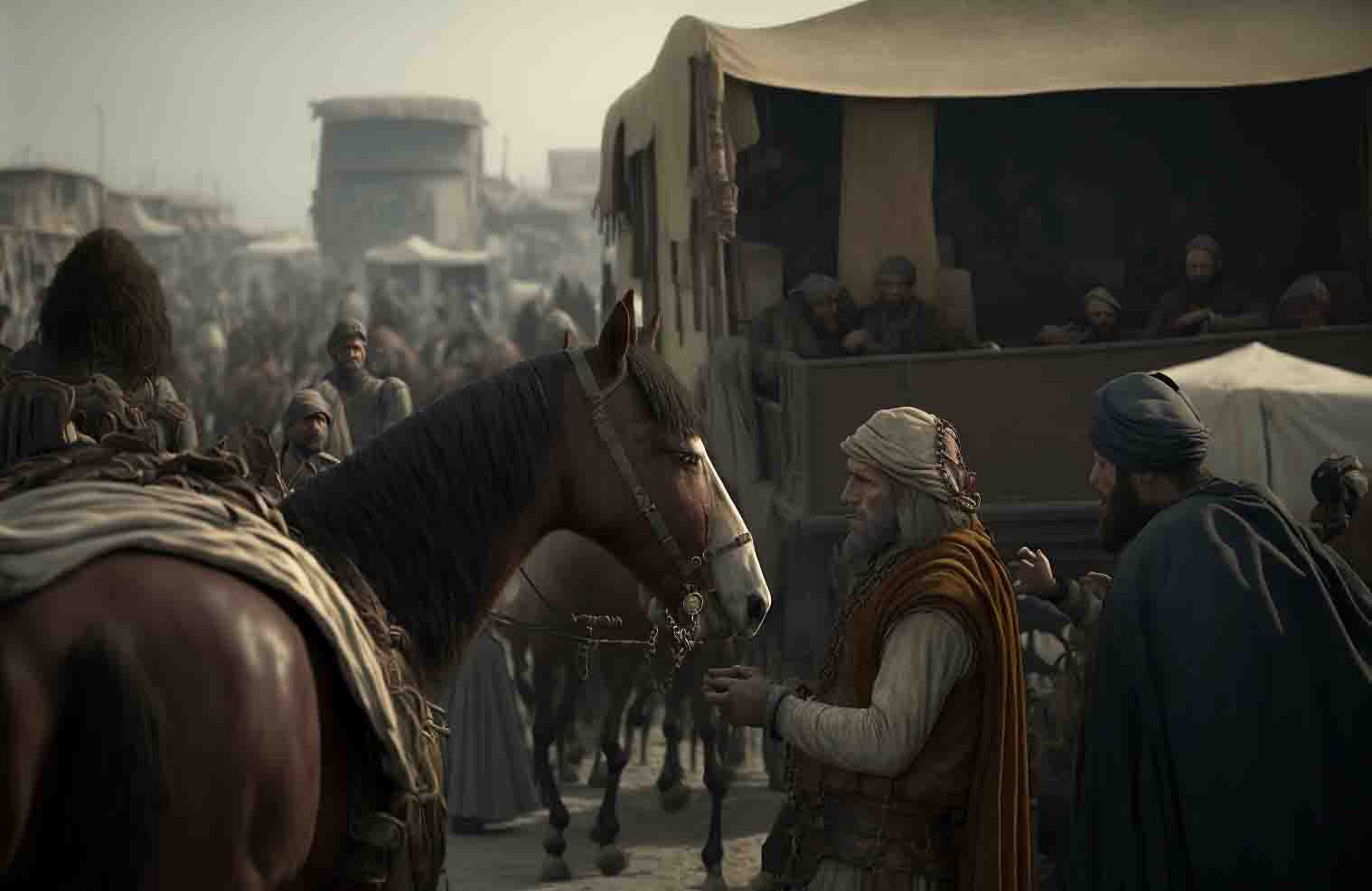
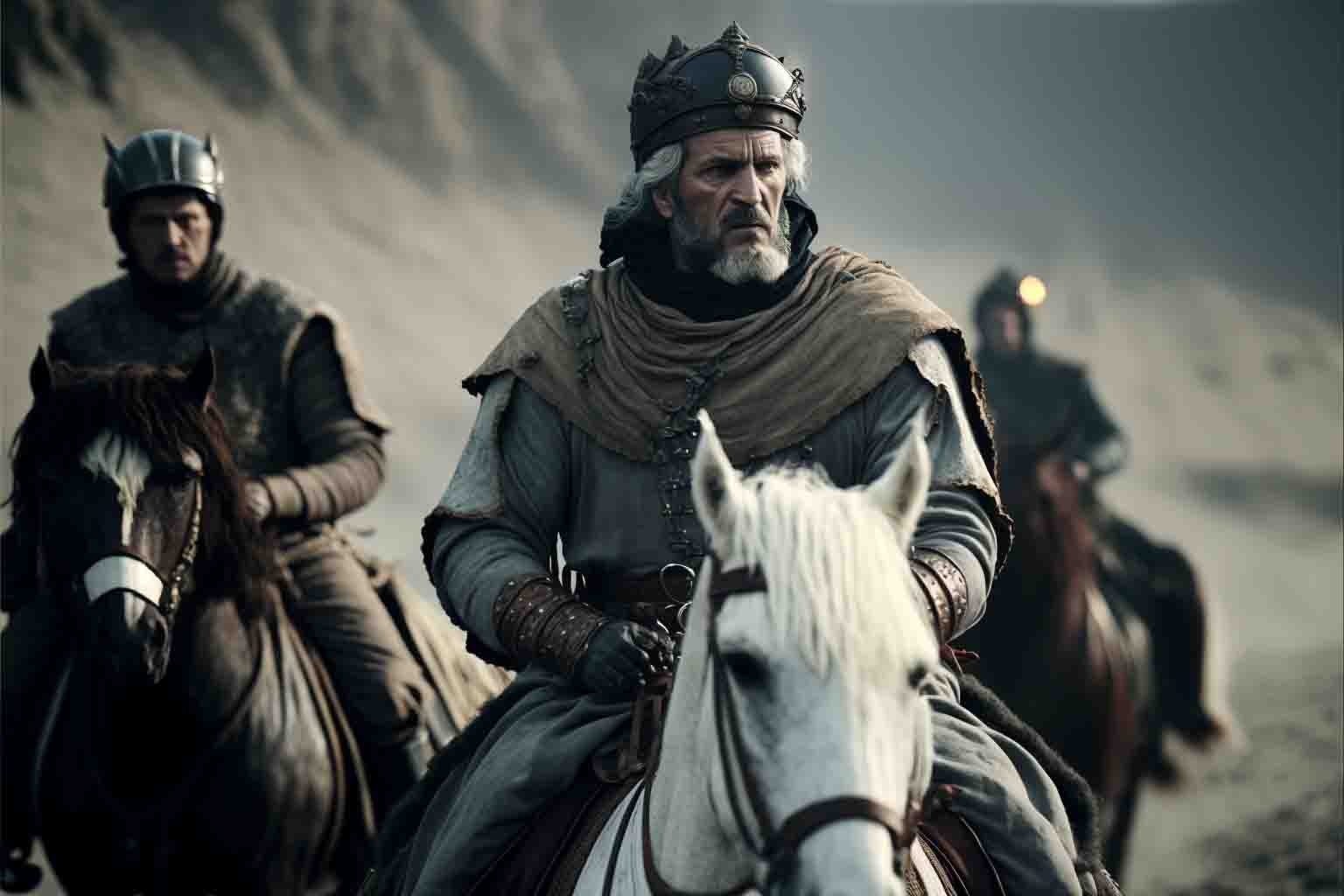
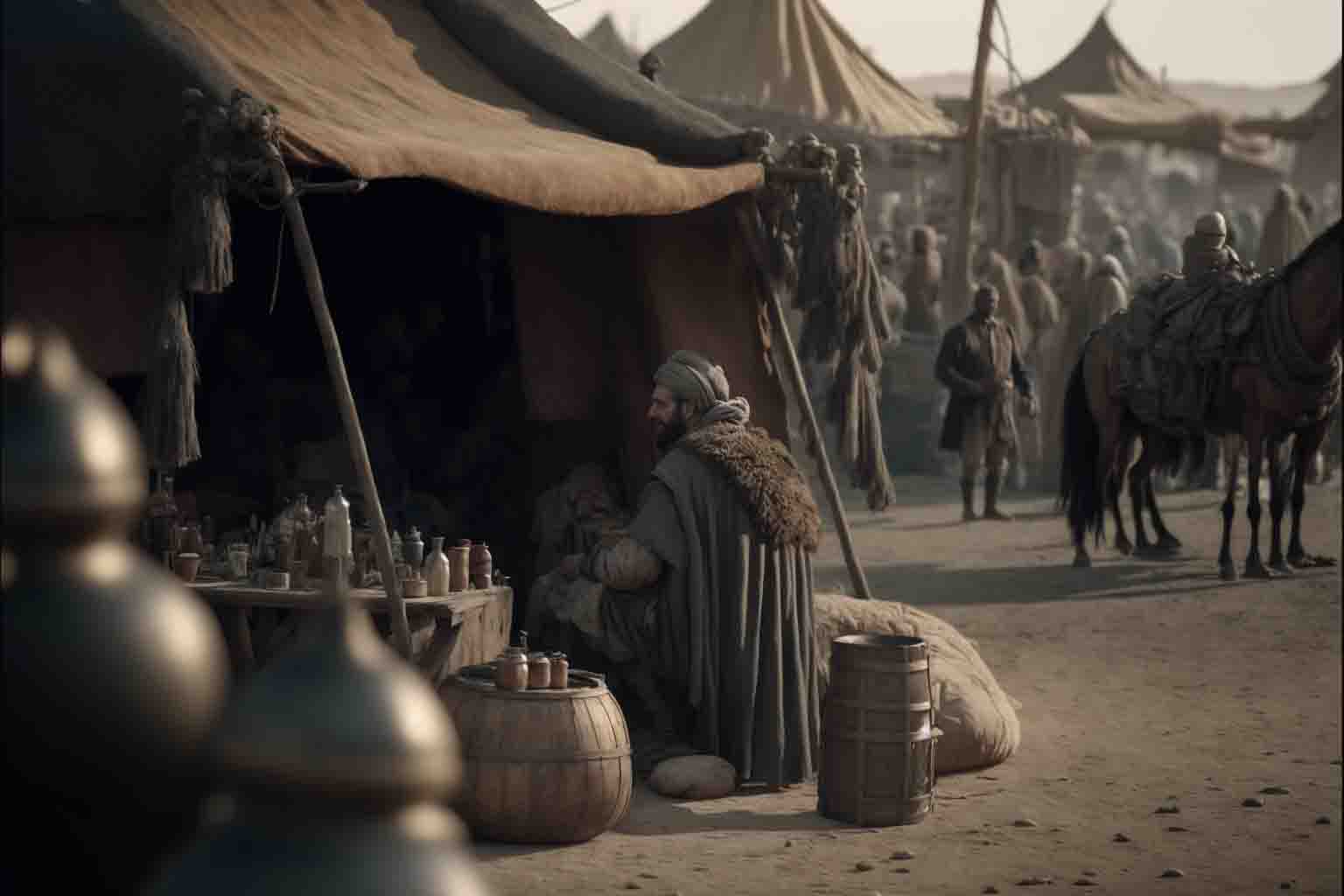
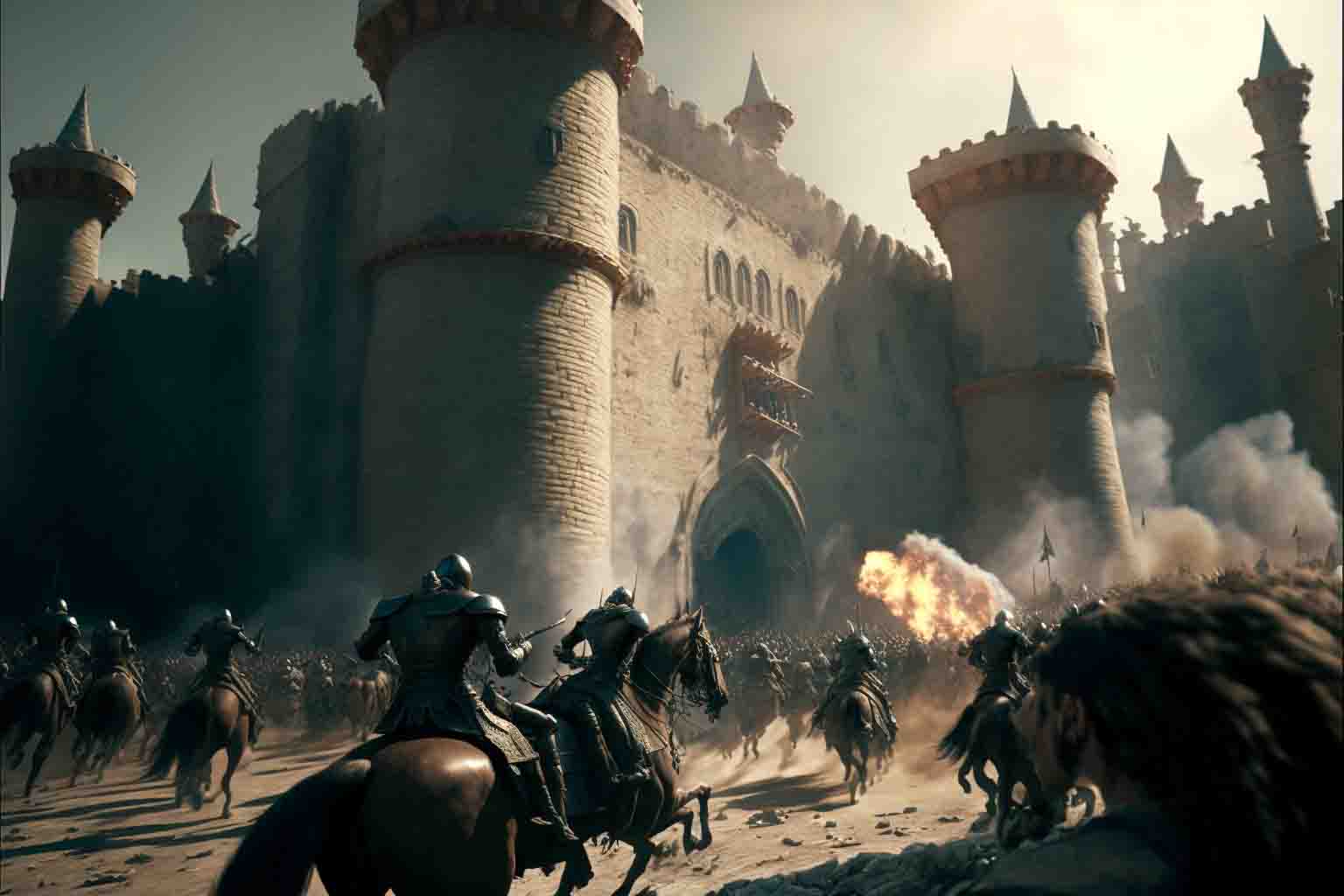
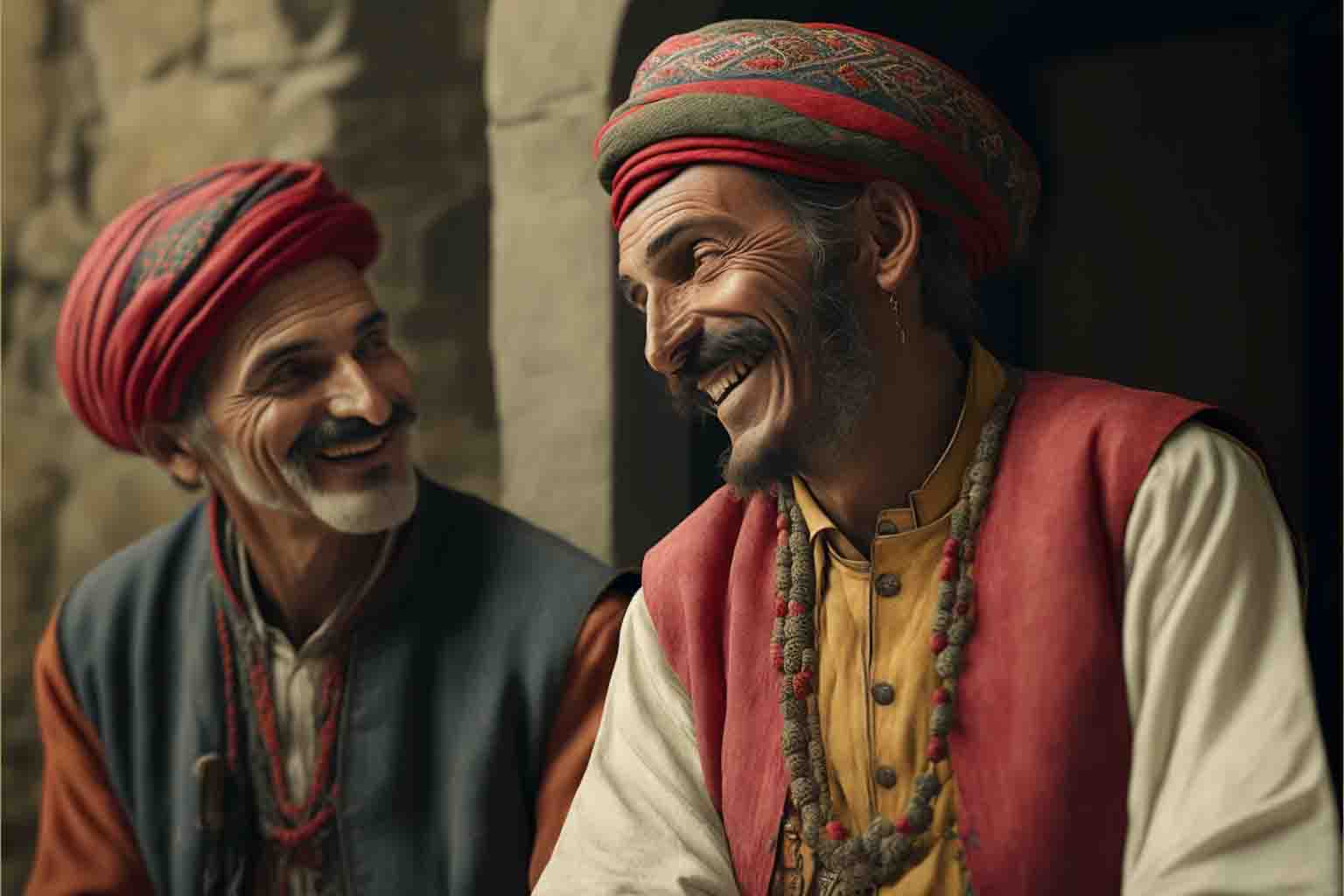
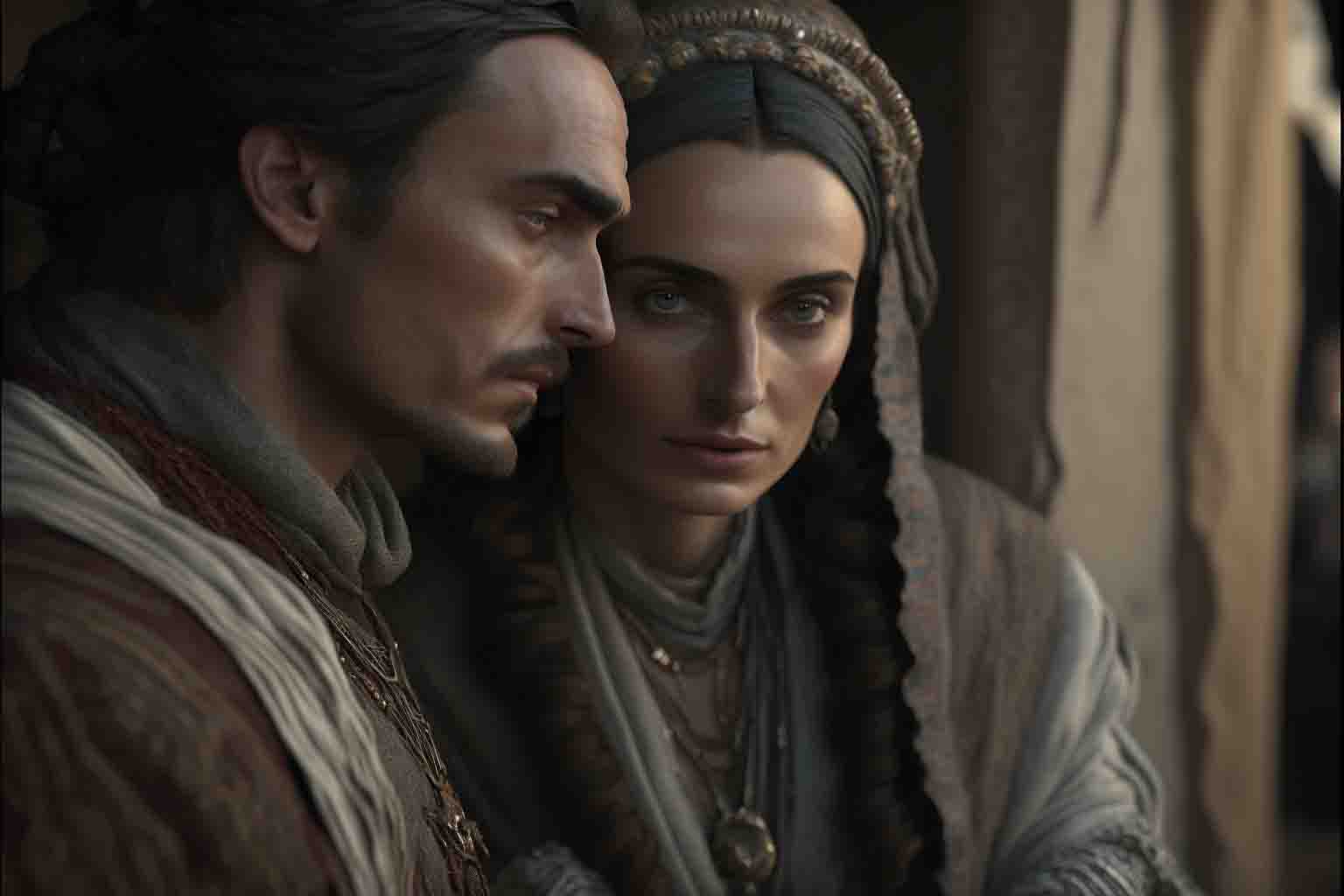
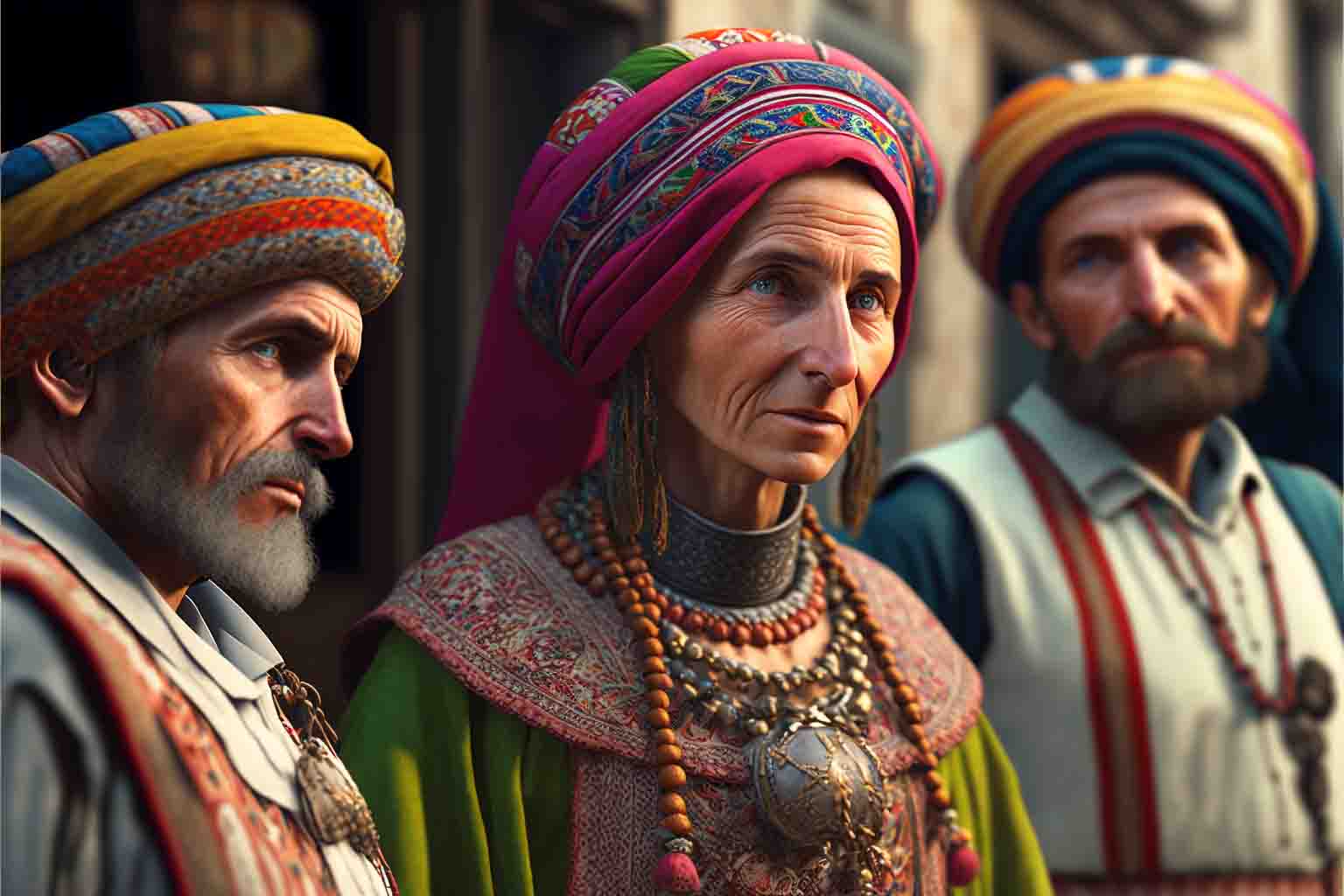
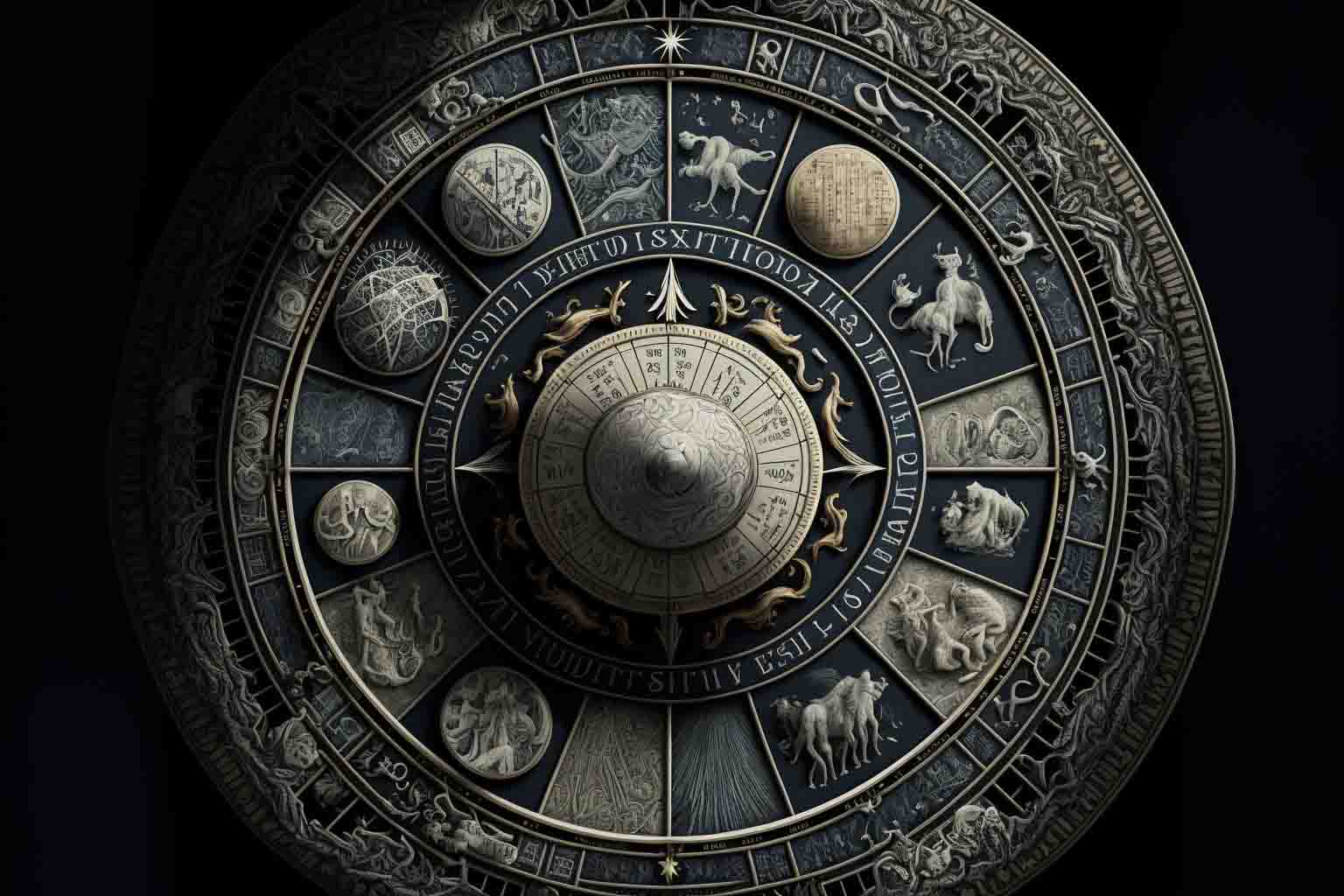
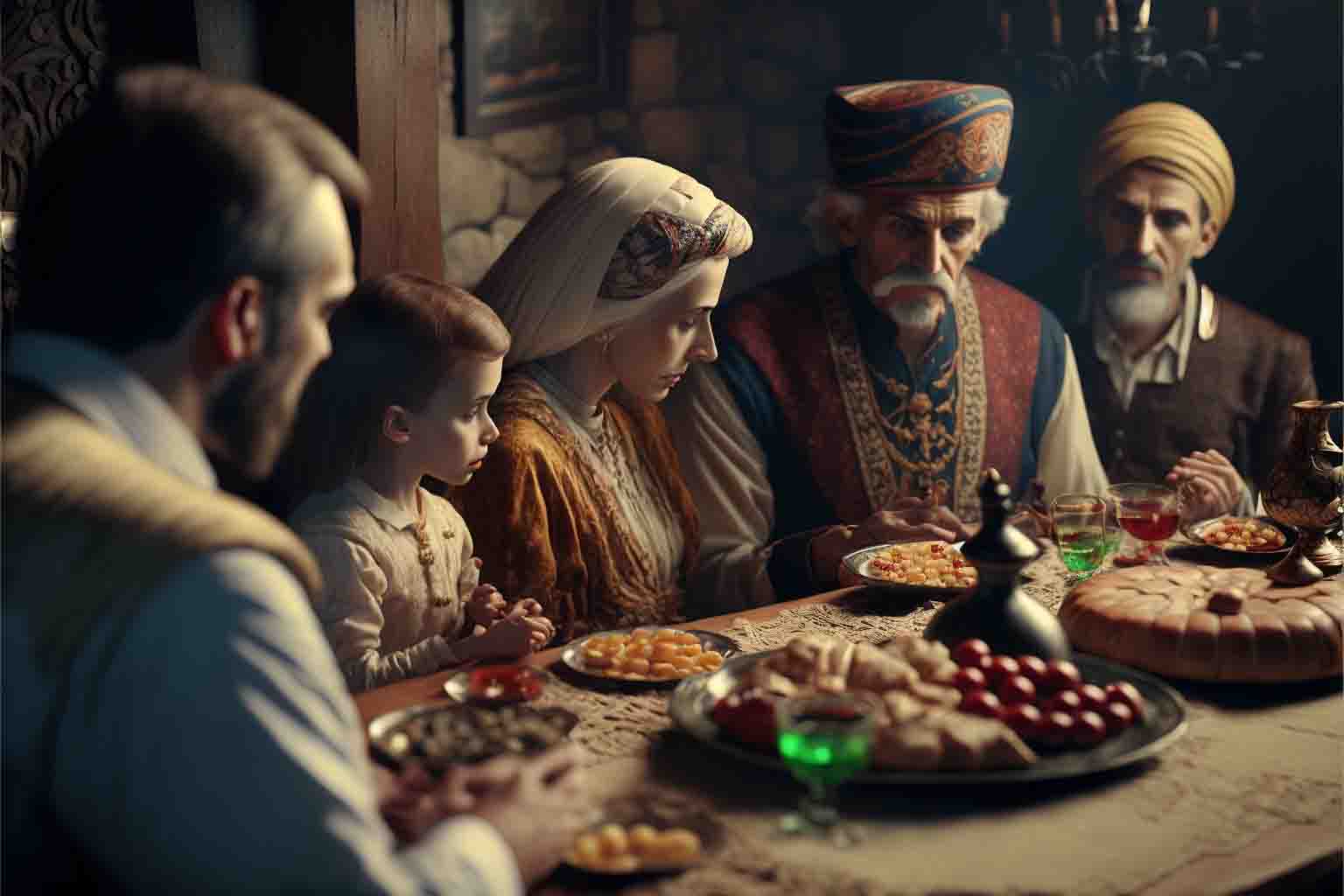
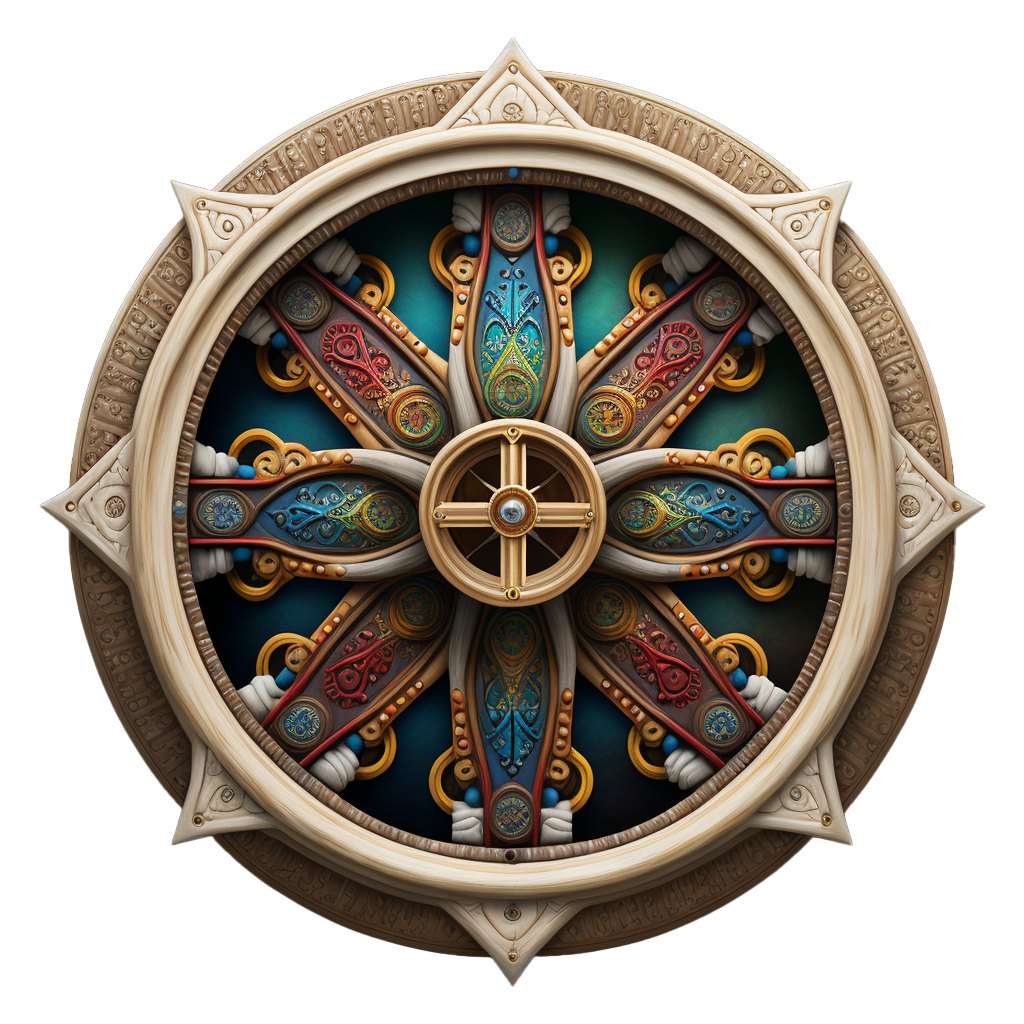

Comments